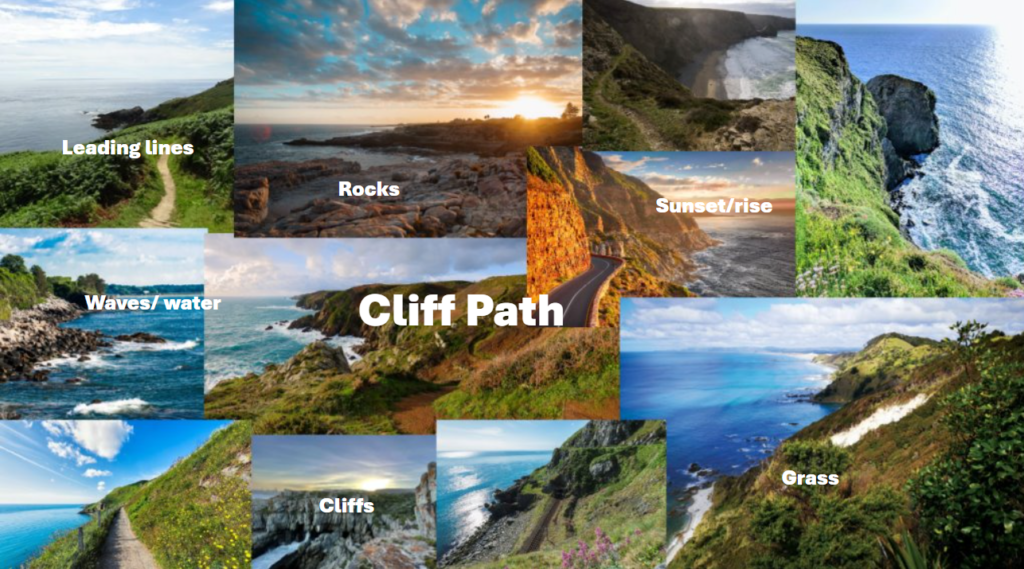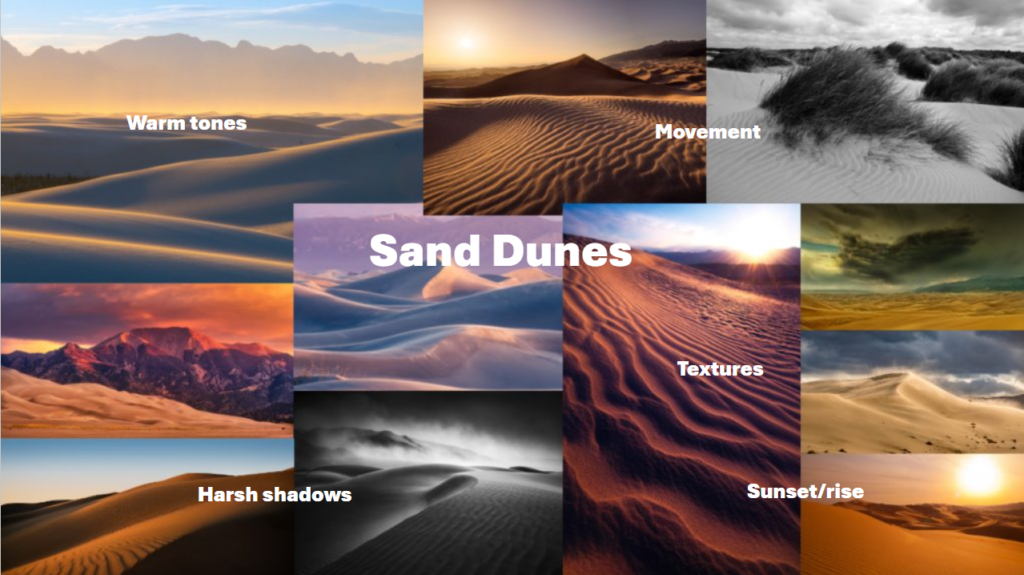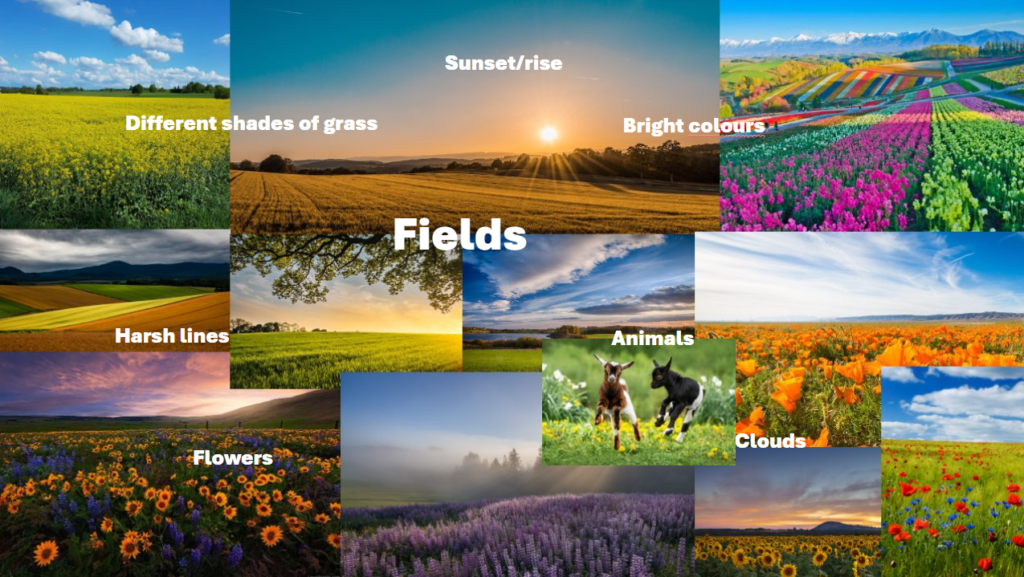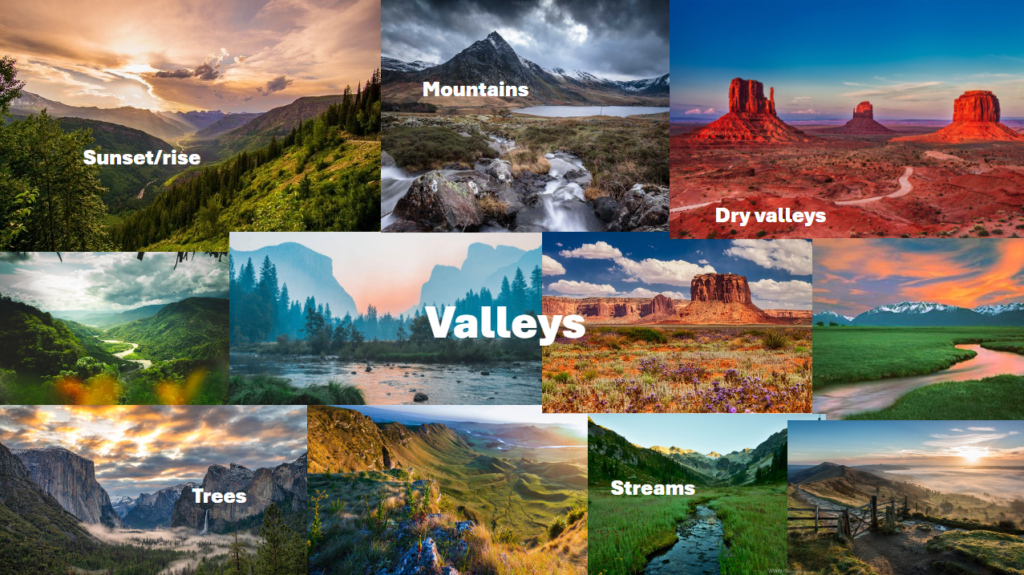Landscape photography is used to show spaces in the world, sometimes vast and unending but other times microscopic. Landscape photos typically capture the presence of nature however they also capture human-made features which have disturbed the natural landscapes. The four things which make a good landscape photo are fantastic lighting, strong composition, appropriate sharpness and optimum exposure. One of the downsides of landscape photography is that you have no control over the weather, for example you may want to take a photo of the sunset however it is rainy and there is no sun visible. Landscape photography is done for many different reasons. One of the most common reasons for landscape photography is to be able to hold on to a memory of what you seen whilst being outdoors, especially when travelling. Others choose to pursue it as an outdoor lifestyle to feel involved with nature often to escape the artificial world. Majority of landscape photography has little no to human activity and are created to show the pure, undisrupted image of nature. Landscape photography commonly involves daylight photography of natural features of land, sky, and waters, usually these photos are taken from a distance. However some landscape photographs may involve subjects in a scenic setting nearby, or even close-up, and sometimes at night. Photographs of unnatural scenery such as farm fields, orchards, gardens and architecture may also be considered as ‘landscape’ photography as well. Even with the presence of man-made structures, such as buildings, or art, for example a sculpture, may also be considered as landscape if presented in an artistic setting or appearing in an artistic style. Landscape is arguably a form of ‘still life’ due to its relatively still subjects. A positive of landscape photography is that it has contributed to tourism and became a large part of local economies throughout the world. Countries such as Scotland and Canada are very popular with the photography tourists and welcome many people from all over the world. Due to this, landscape photography workshops have became a large business technique in these countries.
Examples of landscape photography:
There are many different types of Landscape Photography however these are some of the ones which people mainly focus on:
Cliff path photography:
Cliff path photography tends to consist of leading lines which bring the viewers attention to certain areas of the photo. They also more often than not include greenery, like many other landscape photography.

Beaches:
I particularly like beach photography due to the sunset/ sunrise photos and the way the sky changes to a warm tone. They often also include photos of the ocean making contact with the sand whilst the tide comes in. This will be a good thing to photograph especially in Jersey due to its many beaches.

Sand dunes:
Sand dune photography is full of texture and movement due to the ripples in the sand. They also tend to have warm tones. This will also be good to photograph in Jersey due to the large area with sand dunes.

Fields:
Photography of fields is full of vibrant flowers and greenery as well as some wildlife and animals.

Country lanes and paths:
Country lane photography consists of many leading lines which almost makes the viewer feel as if they are there due to the viewpoint at which the photograph is taken at. Martin Fry is a photographer which is particularly good at this type of photography.

Woods:
Woodland photography often has a dark tone to it as well as different viewpoints such as the tree tops. The interesting shaped trees make interesting photos in woodland photography as they are unique every time.

Valleys:
Valley photography often have rivers or streams along with many different types of greenery such as trees, grass and even flowers. Some are dryer valleys which is shown by the lack of greenery and water.

The origins of Landscape Photography
The first landscape photography was created by a French man named Joseph Nicephore Niepce between the years of 1826 and 1827. This photo was not only the first landscape photograph but also the first ever permanent photographic image. Niepce is now considered as one of the most important figures within the invention of photography. Niepce was born in France in 1765, he was an amateur scientist, inventor and artist.

Since this landscape has evolved into a widely used genre of photography due to its beauty yet simplicity, with many people sharing these photos using social media. The photos have also gotten much clearer and sharper over time and they even have colour.
